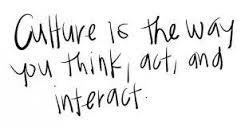Which scenario describes you best 1 minute before a presentation?
1) Heart racing. Nervous, but antsy. Alert. Reviewing your notes for the umpteenth time. Worried you might forget something, but slough it off – they won’t know what they missed if you forget something. You rock at winging it! Step in to the room, find your light (or the nearest fluorescent fixture) and go! Clear loud voice, moving, engaging the audience. See someone looking a bit bored, but immediately assume they are clinically insane because this presentation is AMAHZING. Redirect attention to the 9 people smiling and vigorously nodding. Become more alive and energized with every nod. Eliciting laughter and interaction. Cut to end of presentation. Fist-pump. Nailed it.
Or does this sound more accurate?
 2) Heart racing. Cold sweat. Also feel oddly hot. Face is bright red, as is neck, chest, and….can’t look any further down. Read notes again – DON’T FORGET to use the word gargantuan in the 3rd sentence you have planned for the 3rd slide. It is the only word that is important and if you forget it, the whole presentation is ruined. ARE THOSE PIT STAINS? OMG. This is going to be the worst. They are going to think I am stupid. I hate this. I’m the worst at this. I’d rather be in a coffin right now.
2) Heart racing. Cold sweat. Also feel oddly hot. Face is bright red, as is neck, chest, and….can’t look any further down. Read notes again – DON’T FORGET to use the word gargantuan in the 3rd sentence you have planned for the 3rd slide. It is the only word that is important and if you forget it, the whole presentation is ruined. ARE THOSE PIT STAINS? OMG. This is going to be the worst. They are going to think I am stupid. I hate this. I’m the worst at this. I’d rather be in a coffin right now.
Public Speaking is my worst enemy.
Anything sound familiar? If you said #1, thanks for stopping by. You are like me and totally get your jollies from presenting. Share this with people who don’t get how you do it. Bye Felicia.
If you said 2, you are the MAJORITY. 75% of people have glossophobia.
3 Public Speaking Tips
1. Look for your person. There is always one person nodding and smiling and totally eating up everything you are saying. Either they come naturally, or you plant them in the front row. I’ve found that there is always one empathetic soul who “feels” your presentation pain, and does everything possible with their face to make you feel comfortable. Look at them, trust that you are doing ok.
2. Recognize people intake information differently. The fact of the matter though, is that not everyone nods and smiles and looks so excited every time you speak. Others take in information differently, they are seeking details, or are analyzing information. Their facial expression ranges from quizzical to what appears to be downright offended at what you are saying. Look away and find #1. Calm down. Now – are you speaking with enough detail? Too much detail? Too high level? Not high level enough? Take stock of those furrowed brows, and make some adjustments – even better – call it out. “I see some quizzical faces out there – how can I help?”
3. The triangle of power. If you are one to get shaky hands, or in your  excitement flail your arms around more than a bird in flight – this trick is for you. Activating pressure points while also giving your hands something to do.
excitement flail your arms around more than a bird in flight – this trick is for you. Activating pressure points while also giving your hands something to do.
Even the most confident and authoritative speakers use it. Not that I want you to harness the energy of these two.
We’d love to hear your public speaking nightmares and successes @whiteboardconsulting on Twitter.
Until next time,
Nicole







 awkward asking these questions. I guarantee that this moment of mild awkwardness is FAR less painful than arriving at TWCC (Toxic Workplace Culture Central). Read more on the signs of a toxic workplace culture
awkward asking these questions. I guarantee that this moment of mild awkwardness is FAR less painful than arriving at TWCC (Toxic Workplace Culture Central). Read more on the signs of a toxic workplace culture